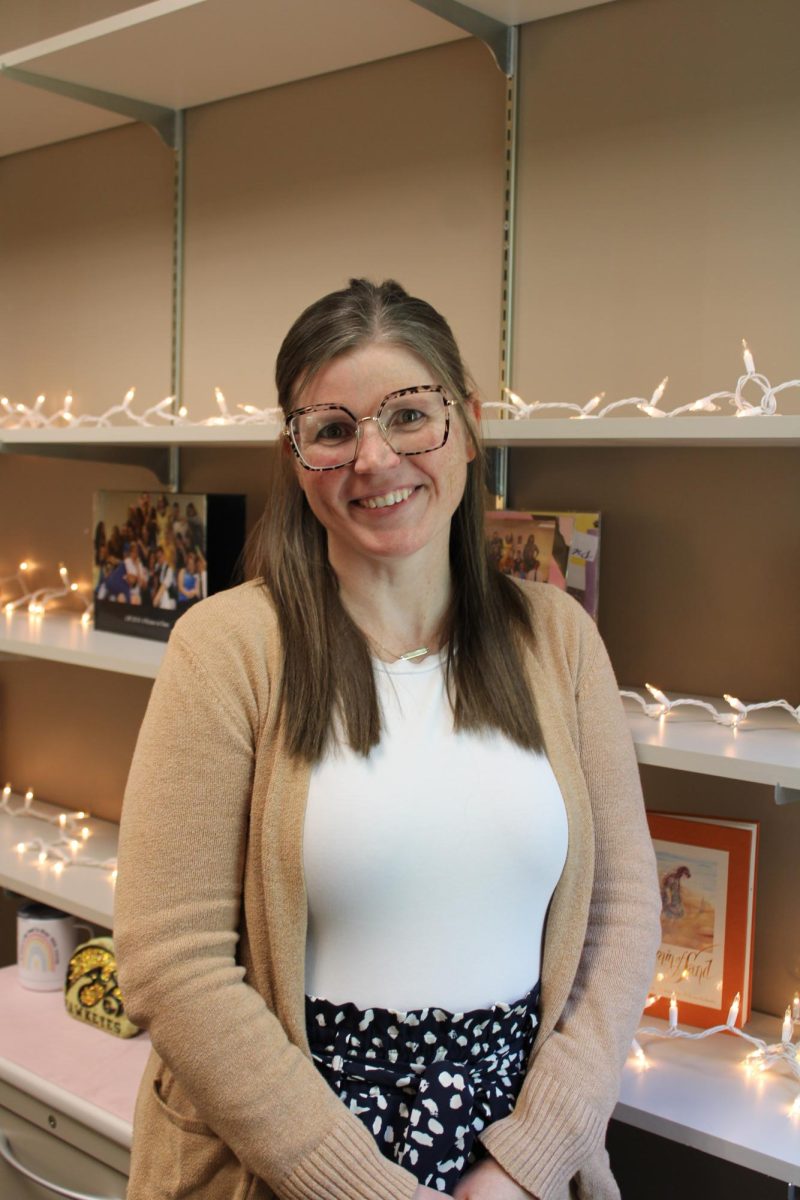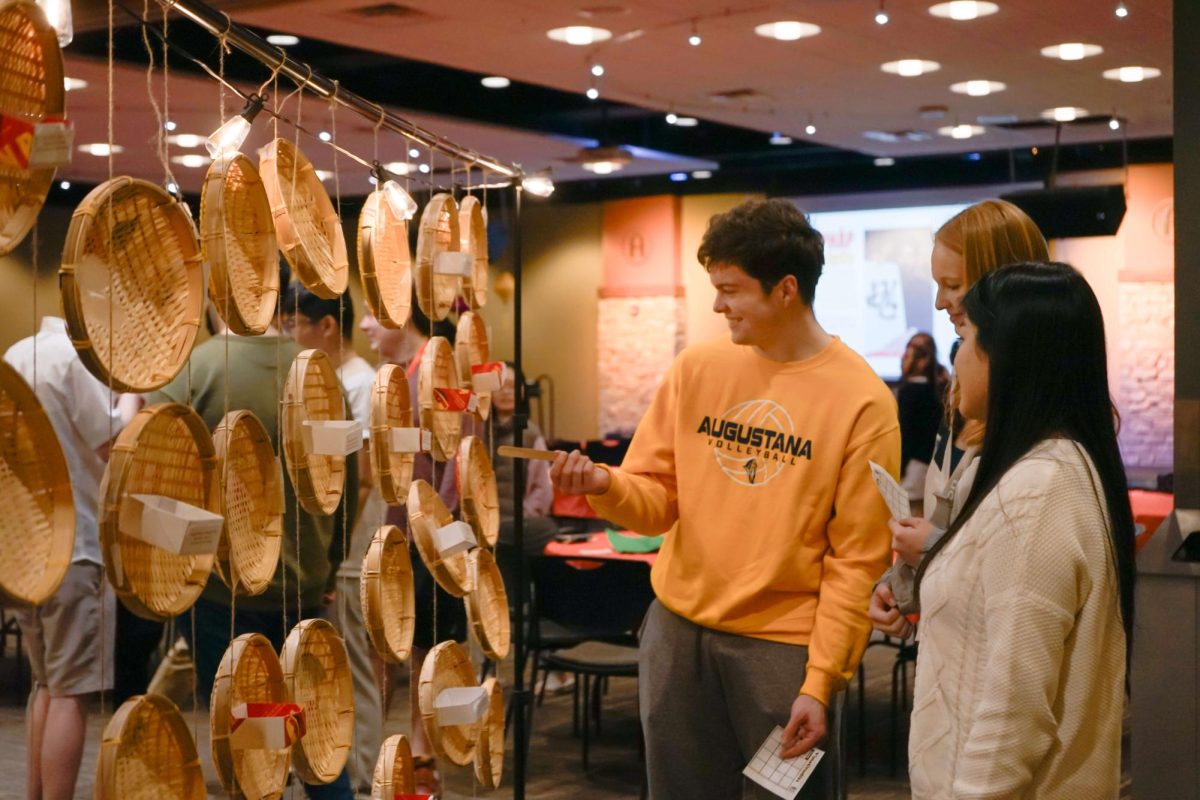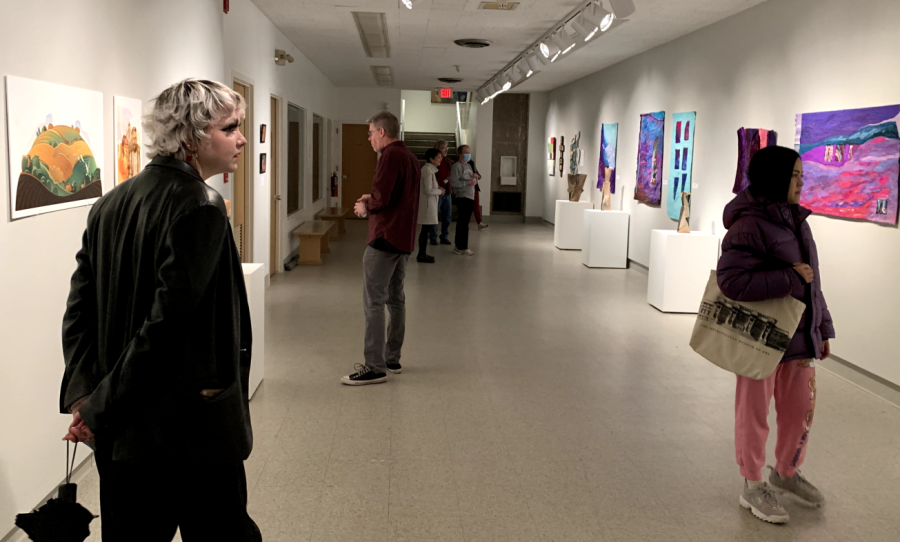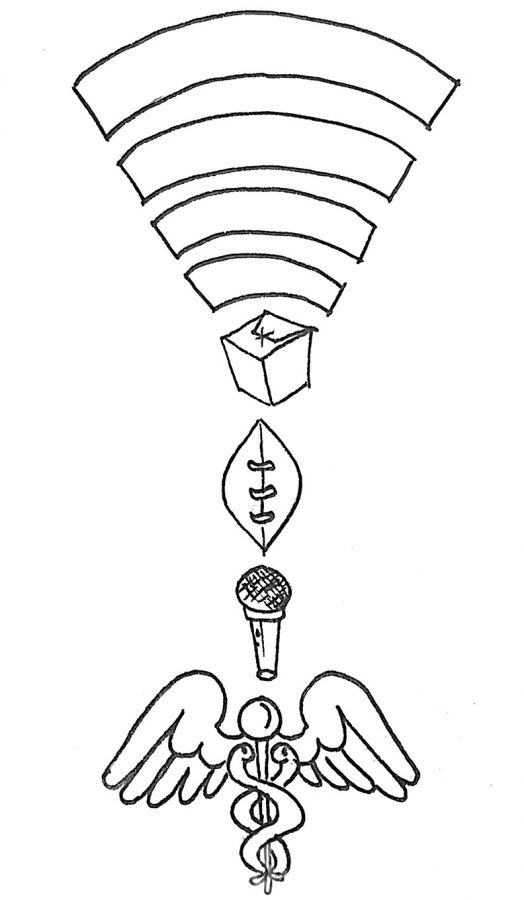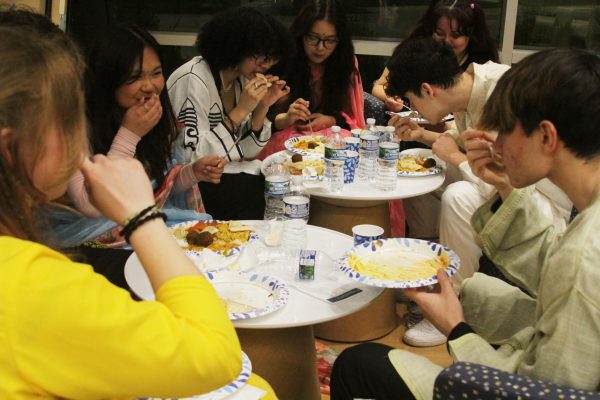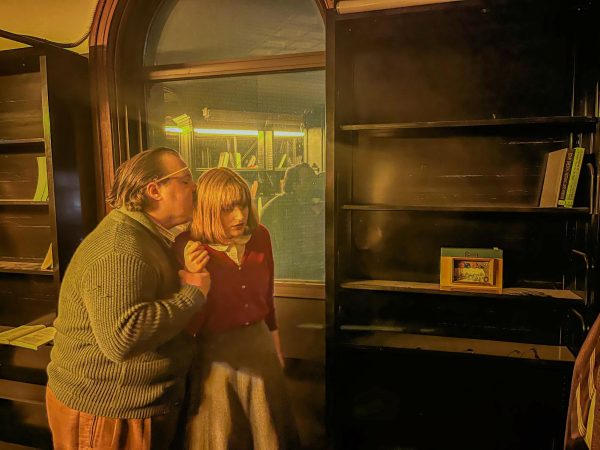How concert attire unifies an ensemble
Seniors (left to right) Margaret Cannizzarro, Madeleine Rodriguez, Anna Triska and first-year Cassidy Wiltjer talk to each other while waiting to be fitted.
October 10, 2021
As the world becomes a more accepting place, so do Augustana’s music groups. As a result, concert attire has been a pressing matter for these groups as they continue to look for ways to be more inclusive while maintaining prestige and professionalism.
The Jenny Lind Vocal Ensemble has undergone the most changes in concert attire. “Everyone in Jenny Lind wore purple dresses [because] it was an all female choir,” senior Jenny Lind Choir Manager Grace Kim said. “We used to call it [that], but for us to be more gender inclusive we call it a treble choir.”
Jenny Lind decided that allowing students to wear what they feel most comfortable in creates an opportunity for inclusivity and representation. This year, Dr. Zemek and his students have selected the personal choice of all formal black wear. “I have friends who hated those purple dresses because they’re non-binary or they don’t see themselves as female,” Kim said.
Jenny Lind’s transformation has created a safe place for students’ gender identities, but it has also transitioned away from the choir’s originality in concert attire. Jenny Lind wore purple dresses to create a distinction among other choir groups because it only consisted of sopranos and altos.
“That individuality that the choir used to have, we don’t [it anymore],” senior Eva Schmitt said. “It was a little heartbreaking that we weren’t going to be our separate thing, that we were all being lumped together.”
Ultimately, a lot of students appreciate the change. “[Black] is a color for any gender, any identity, and it connects us as a group,” Schmitt said. In addition, the change in concert attire has brought the music groups closer together by allowing them to express their own identity. “In a sense we’re still sticking out,” Kim said. “We don’t need the purple dresses to do that.”
Not only have the choir groups been searching for new concert attire for their performances, but so have the bands. The symphonic band has decided to give students two options: a black tux and black bow tie or palazzo pants and a black shirt.
“I think we’re going to come up with something that looks a little bit more professional and classier,” Dr. James Lambrecht, director of the symphonic band, said. “Something that fulfills the needs of more people, in terms of what they feel comfortable wearing.”
Dr. Lambrecht believes they are heading in the direction of wearing something like marching bands. “Marching bands wear the same uniform,” Dr. Lambrecht said. “I think that’s where a lot of people are going and we’re going to hit our cues from professional ranks and how they handle it.”
Black formal wear has been a tradition historically among various music groups. It creates a cohesive aesthetic and allows audiences to focus on the music. “It shows the group is unified, visually right away, so then you expect, hopefully, to hear a unified presentation of music as well,” Dr. Lamrbrecht said.
In past years, gender expression in concert attire has not been a topic of conversation. “As we’re moving into a greater acceptance of non-binary identification, the issue of uniforms has come up as a topic because we have to seriously think about this,” Dr. Lambrect said.
Students feel more comfortable at concerts and tours since they can express their identity through different attire options. This transition has brought Augustana’s community closer together as the music groups at Augustana become educated and inclusive of gender identities for everyone.
